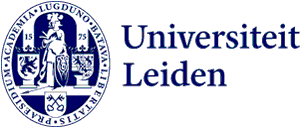
Archaeologists receive funding for science communication: ‘We want to change the public image of archaeology’
A diverse team of Leiden archaeologists applied for, and was awarded, the KNAW ‘Appreciated!’ grant, meant to further their science communication endeavours. We speak with Dr Maikel Kuijpers, who is the main contact person of the application.
Science communication corridor
While the grant technically is awarded to a single person, Maikel Kuijpers immediately stresses that he and his colleagues applied as a team. Or, as Kuijpers would have it, as a corridor. ‘The team consists of colleagues who have offices in the same Faculty corridor. We are all interested in and occupied with science communication in one form or another”
Part of the team are Marie Soressi, Femke Tomas, David Fontijn, and Quentin Bourgeois. They were awarded the grant for their strong profile showing their capabilities in science communication. ‘Our projects range from making documentaries to appearing in them and from children’s books to citizen science.’ Kuijpers is not a stranger to science communication himself. ‘I write for the Correspondent and have helped develop a board game about technological innovations in prehistoric times.’

Novel ways of science communication
The €10,000 will be used for further science communication projects. While the meeting in which the money is divided is yet to take place, some plans have already emerged. ‘Some of the funding will likely be used to create up to date images of prehistoric people for the Dutch Canon This builds on our critical opinionated piece we published in the Volkskrant last year. Such images have a lasting and profound impact.’ This is something all ideas seem to have in common: a lasting impression. ‘We try to steer away from traditional science communication. Instead, we aim to really involve people, especially youngsters, through projects like Heritage Quest, children’s books, and board games.’

Changing the image of archaeology
Another aim of the team is to show that archaeology has changed over the years. ‘There is an image out there about archaeology that is just plain wrong. We still encounter ideas about dinosaurs, gold and treasures, or working with toothbrushes in the field.’ Instead, current archaeology is a fundamentally interdisciplinary science. ‘Archaeologists use big data, LiDAR, and are able to extract aDNA from soils. Next to this, we engage with fundamental societal challenges like social inequality and climate change. Why then, are news items still mostly about finding treasures, uncovering myths, or unearthing the oldest,largest, or richest artefact or site?’
Trying to change the way people see archaeology sounds like an ambitious task. ‘But we as archaeologists are the only one who can do this. The new generation of students can do this. This grant will help to continue our work. Now it is up to us to not only communicate about specific finds, but about the discipline of archaeology. Why does archaeology matter?’
